This was published 8 months ago
The Australian research (and brains) that led to a new schizophrenia drug
By Angus Dalton
Examine, a free weekly newsletter covering science with a sceptical, evidence-based eye, is sent every Tuesday. You’re reading an excerpt – Sign up to get the whole newsletter in your inbox.
Scores of Australians who agreed to donate their brains to science decades ago have helped pave the way for a game-changing drug that could alleviate the debilitating symptoms of a common cognitive syndrome.
Schizophrenia affects one in every 100 people and usually sets in early, impacting people in their 20s and 30s, who suffer hallucinations, delusions, loneliness and social withdrawal, and cognitive decline.
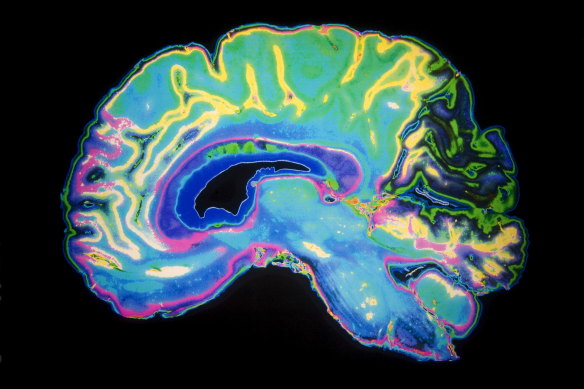
Donations of brain tissue led Australian scientists to make crucial discoveries that led the way for a breakthrough schizophrenia drug.
Many who have schizophrenia don’t respond to antipsychotic drugs.
That’s why experts are cheering the US Food and Drug Administration’s approval of a drug that treats schizophrenia differently – the first novel treatment in 70 years.
“Until now, all available medicines for the treatment of schizophrenia have predominantly been based on science that essentially dates back to the 1950s,” says Arthur Christopoulos, a pharmacology professor at Monash University who contributed to the science underpinning the breakthrough.
The triumph has roots partly in Australia, where for more than three decades, scientists have undertaken basic discovery research into the molecular architecture of the brain.
The conundrum of schizophrenia
The symptoms of schizophrenia are thought to be caused by the dysregulation of dopamine – a hormone and neurotransmitter that affects how we think and plan and experience pleasure. All current antipsychotics target one dopamine receptor in the brain, D2, to reduce symptoms.
The drugs mainly treat the so-called “positive” symptoms, though. You can think of positive symptoms as a distortion of inputs to the brain that result in people with schizophrenia having false ideas or beliefs (delusions) and false perceptions (hallucinations) which mainly involve sight and sound.
But there are also “negative” symptoms, which can take away normal behaviours, such as the ability to communicate or feel pleasure.
The third group of symptoms is arguably the most disabling: cognitive deficits that affect memory, focus, reasoning and attention. These symptoms disrupt treatment and day-to-day living, and can prevent people with schizophrenia entering the workforce, says Professor Brian Dean from the Florey Institute.
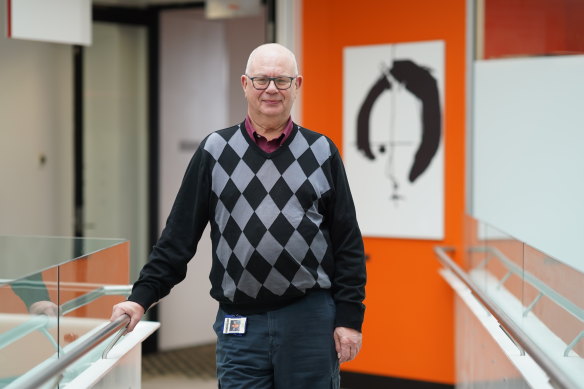
Professor Brian Dean from the Florey Institute undertook initial research that laid the foundations for a breakthrough treatment for schizophrenia.Credit: The Florey
“If a doctor says to someone with schizophrenia, ‘You have to take these tablets daily to keep your illness under control’, they don’t necessarily conceptualise the connection between the drugs they’re taking and then the disease getting better,” he says.
“That’s the conundrum of schizophrenia.”
While most current antipsychotics fail to markedly improve negative symptoms and cognitive decline, one drug seemed to work in people resistant to other antipsychotics: clozapine. It binds to a different type of receptor in the brain.
Back in the 1990s, Dean was one of the researchers who began pursuing these curious structures, called muscarinic receptors. And he needed brains.
The key receptors
“The first experiments are something that I feel very honoured to have done,” Dean says. “They were on post-mortem brain tissue collected after someone with schizophrenia had died, and these were donated by their relatives right across Victoria.”
The experiments showed people with schizophrenia had low levels of two muscarinic receptors, M1 and M4, in key areas of the brain.
“These receptors are important in cognitive functions such as decision-making and memory. They are also important in how we perceive the world in general because they monitor how we process input from vision and from hearing,” Dean says.
“So you can imagine if they go wrong, it would quickly generate problems.”
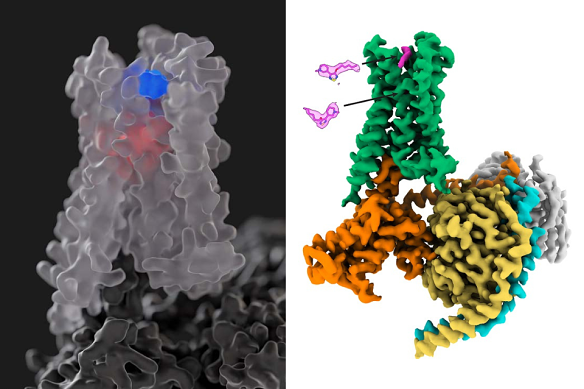
Images of the key M4 receptor produced out of research conducted by Professor Arthur Christopoulos at Monash University. The image on the right shows xanomeline’s interaction with the receptor.Credit: Sarah Piper/Monash University
In a follow-up experiment, he and his colleagues took ultra-thin slices of brain tissue and exposed them to a radioactive molecule known to bind to M1 and M4 receptors. That revealed a subset of just over a quarter of people with schizophrenia who had about 74 per cent fewer receptors in certain parts of their brain.
By the start of this century, data from multiple lines of evidence led Dean and other scientists to suggest that stimulating M1 and M4 receptors could make for a potent treatment for schizophrenia.
US researchers at pharmaceutical company Eli Lilly were investigating the drug xanomeline – which activates muscarinic receptors – for use in Alzheimer’s disease.
“People at Eli Lilly saw our and other research and said, well, hang on, those results suggest it would work in schizophrenia – let’s try it,” Dean says.
But they soon ran into a painful problem.
‘It’s just looking so promising’
A small study showed xanomeline, as expected, improved the positive, negative and cognitive symptoms of schizophrenia.
“That part of it was brilliant,” Dean says. “But then you had these horrible peripheral side effects that were just unacceptable.” These included nasty gut pain and vomiting.
The drug was abandoned. But the evidence kept building that targeting M1 and M4 could be a game-changer. Former Eli Lilly scientists took up the torch and founded a new company, Karuna Therapeutics, and began hunting a way to allow the drug’s effect in the brain while blocking it in the body.
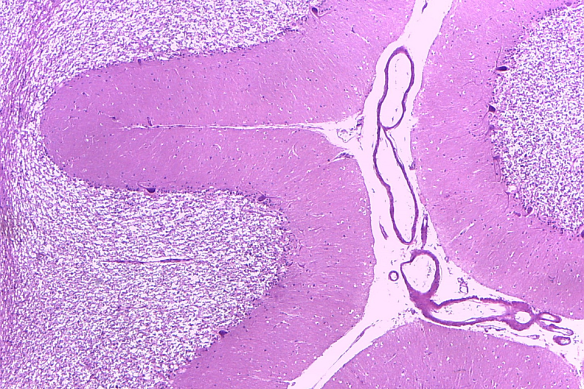
A stained section of human cerebellum, from the Victorian Brain Bank.Credit: Florey Neurohistology,
They found their answer in trospium, a bladder-control drug. It blocked xanomeline’s effects on the gut but didn’t cross the blood-brain barrier.
“That’s what’s so clever here,” Dean says. “Xanomeline goes into the brain. The drug that blocks the side effects doesn’t.”
The new combination treatment, which would come to be known as Cobenfy, retained its cognitive benefits while suppressing the sickening side effects.
With good data from three clinical trials showing the drug could, for some, address positive and negative symptoms and improve cognitive issues, Cobenfy last week became one of the rare new neurological drugs to get approved for use in the clinic.
The drug is expensive at $US20,000 per year, and has to be taken twice a day – a major drawback given the difficulty some people with schizophrenia have in sticking to a treatment regime.
Clinical trials have only tested the drug for five weeks, so longer-term data is needed. But now it’s out in the real world, clinicians will be able to get a proper handle on just how helpful it may be in treating people who had otherwise run out of options.
“Cobenfy is now available to be trialled in the US to all people with schizophrenia,” Dean says. “If this drug can get some of the people with schizophrenia back into the workforce again, which it might because their cognition improves, that would be a fantastic step forward.”
“It’s just looking so promising.”
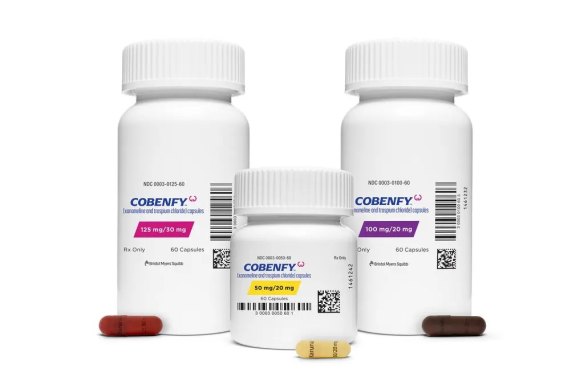
Clinical trials showed a new drug Cobenfy could address positive and negative symptoms and improve cognitive issues in some people with schizophrenia.Credit: Bristol Myers Squibb
The boon of basic research
It’s getting harder to fund discovery research in Australia. There can be a political focus on quick-turnaround, easily translatable drug research that rewards funding with a breakthrough in the span of an electoral term.
Dean says this story underscores the power of basic discovery research.
“We had to wait 24 years for a clinically relevant outcome!” he says. “That timeframe doesn’t fit within the politician’s psyche.
“But basic research in places like the Florey (Institute), trying to understand how brains work and how they’ve gone wrong in disease, is going to be essential for finding new ways to treat depression, bipolar disorder, even schizophrenia.”
He also wants to acknowledge those who donated their brains, and their relatives, whose decision underpinned those crucial early discoveries.
“You could put it that the whole of Victorian society actually made those experiments possible because of their generosity.”
Enjoyed reading this week’s Examine article? Sign up to get the whole newsletter in your inbox.